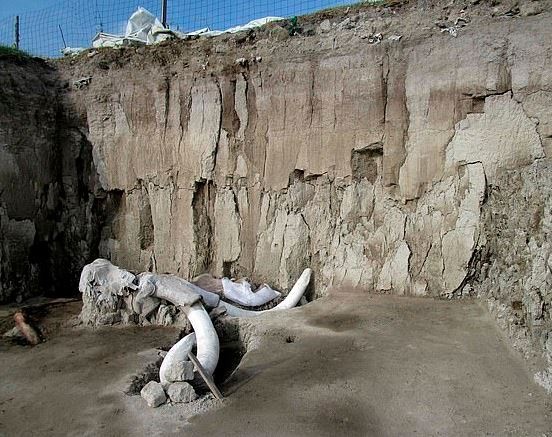Mammoth Skeletons Dated 15,000 Years Old Discovered in Mexico
For so long, archeologists believed that early humans only killed mammoths when they're weak or injured. But this recent discovery proved that early humans have their own way of catching and trapping these giants. In Tultepec, Mexico, experts unearthed mammoth skeletons that shed light on early humans' hunting system.
While excavating, anthropologists unearthed at least 14 woolly mammoth skeletons, which comprised of more than 800 bones. The bones of the mammoths were found in the pits during the excavation for a garbage dump. According to the report of the Daily Mail, the pits were filled with at least 14 mammoth skeletons, and some of the bones showed signs of being butchered.

Because of the placement of the skeletons and the striations of the bones, it was speculated that the pit used to be a mammoth trap made by early humans. According to experts, hunters may have chased the mammoths leading into the trap, which allows them to hunt down these giants with ease. Aside from mammoth skeletons, a horse and a camel were also discovered in the pit.
The human-built pits found are estimated to be about 15,000 years old, Mexican archaeologists said. Mexico's National Institute of Anthropology and History confirmed that the bones of the mammoths were accidentally discovered during the excavation because the pits are supposed to be used as a garbage dump.
According to BBC News, the two pits discovered in Tultepec, Mexico are the first mammoth traps discovered. The early hunters may have used torches and branches and herd the elephant-size animal into the pits. Moreover, the discovery of the bones of mammoths in the pits may change the understanding of how early humans hunted the elephant-sized animal.

Mexico's National Institute of Anthropology and History (INAH) said that there might be more traps in the area of North Mexico that are not yet discovered. Moreover, according to the Mexico's National Institute of Anthropology and History, more evidence suggests that the hunts using the pits were planned.
The director of the institute Diego Prieto Hernandez said that the discovery of the mammoth bones gives the human beings a shed of light on the interactions between hunter-gatherers and the animal-sized animals and this could be a turning point in the human history, most especially in the history that traces the life of human-hunters years ago.
The excavation took place in 10 months with an estimated deep of 5ft and 6 inches and 25 meters in diameter. The discovery of the bones of mammoths in the area of North Mexico is a clear manifestation that the place is a land where both hunters and mammoths lived together years ago.
This discovery is also giving experts a new perspective on just how advanced early humans were. Archaeologists are looking forward for more discoveries in the area and in the adjacent place as it could add knowledge and might change the history of life during the the hunting period.
Read more: Human-built 'mammoth traps' dated around 15,000 years old are discovered in Mexico and Mexico mammoths: Human-built woolly mammoth traps found in Tultepec
Subscribe to Latin Post!
Sign up for our free newsletter for the Latest coverage!
© 2025 Latin Post. All rights reserved. Do not reproduce without permission.















